
A skinny salad sounds like a given. But…
Some salads can be waistline busters (especially from restaurants or fast food places) thanks to jumbo sizing and an overload of high-cal ingredients. But if you skip certain ingredients, like dressing or protein, your salad will be too skimpy, making you prone to hunger pangs soon after.
So what are the ideal ingredients to get that perfect healthy mix? Hear what Digest Diet author Liz Vaccariello suggests, and what studies show can help with weight loss.
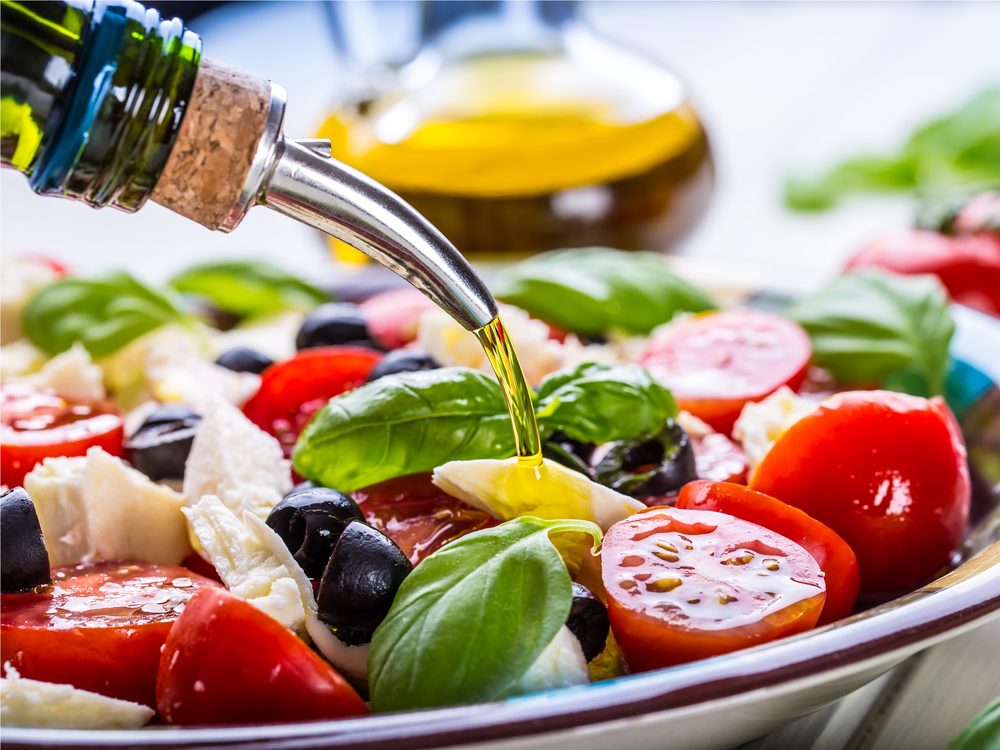
Use an oil-based salad dressing
Here’s why: Many nutrients—specifically vitamins A, D, E, and K—are fat soluble, which means your body can’t absorb and use them without some fat present. So a fat-free dressing is actually counterintuitive!
In fact, a recent Iowa State University study found that people who ate salads dressed with a canola or olive oil-based dressing had higher levels of carotenoids (vitamin A-like compounds) in their blood. Plus, ample research shows these unsaturated fatty acids can help melt belly fat and make your salad more filling.
Even better? Toss the oil with vinegar, a proven fat releaser: Studies show it can help prevent blood sugar spikes after meals.
Discover the sneaky things that raise your blood sugar levels.
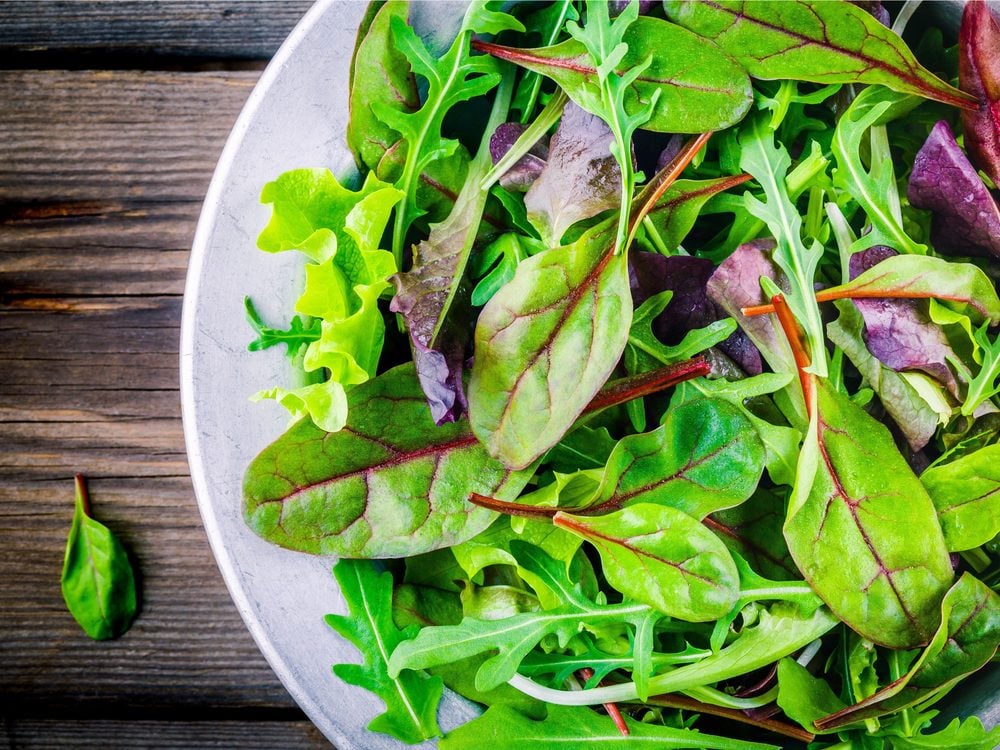
Mix up your greens
Every type of green—romaine, radicchio, iceberg, spinach—boasts its own unique nutrients and healthy benefits. For optimal nutrition, mix ’em up (either within the same bowl, or from day to day). Also consider adding some herbs, like basil or parsley; they pack a strong punch of flavour and loads of disease-fighting antioxidants. And the more flavourful your salad naturally is, the fewer high-cal ingredients you’ll need to add for taste.
Here are 10 healthy eating tips that are good for the planet too!
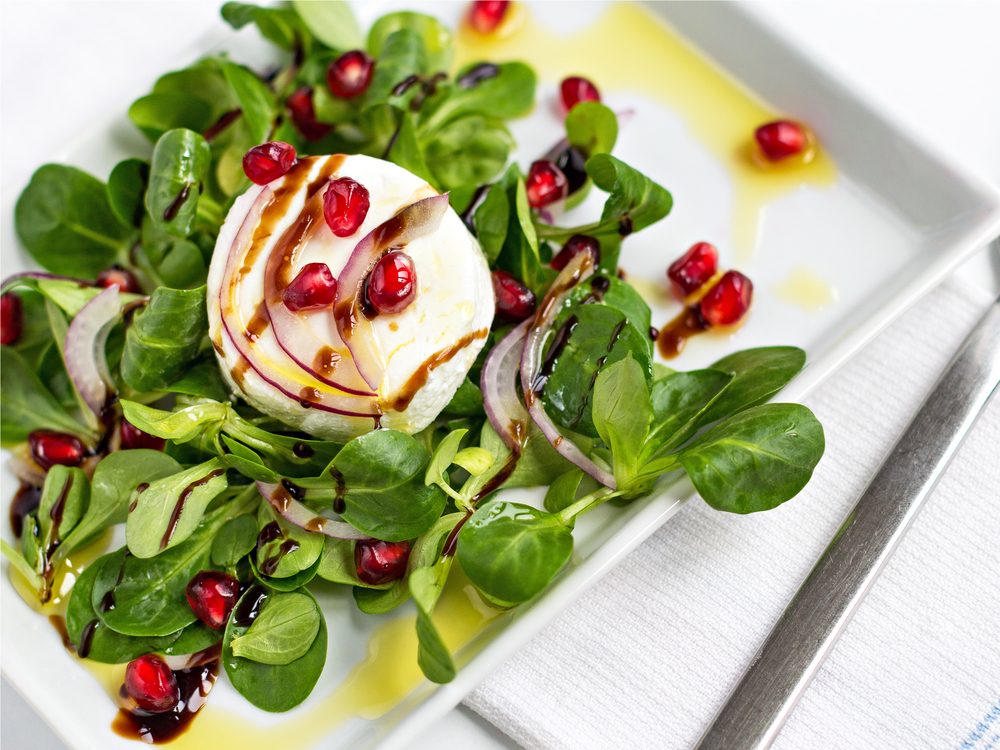
Say yes to cheese
When sprinkled in moderation, low-fat cheese helps people maintain a healthy weight, burn fat, and be less hungry, because it’s a rich source of calcium, which helps release fat. I like paper-thin slices of parmesan, a few balls of creamy mozzarella cheese, or some shredded cheddar.
Check out the healthiest high-fat foods you should be eating more often.
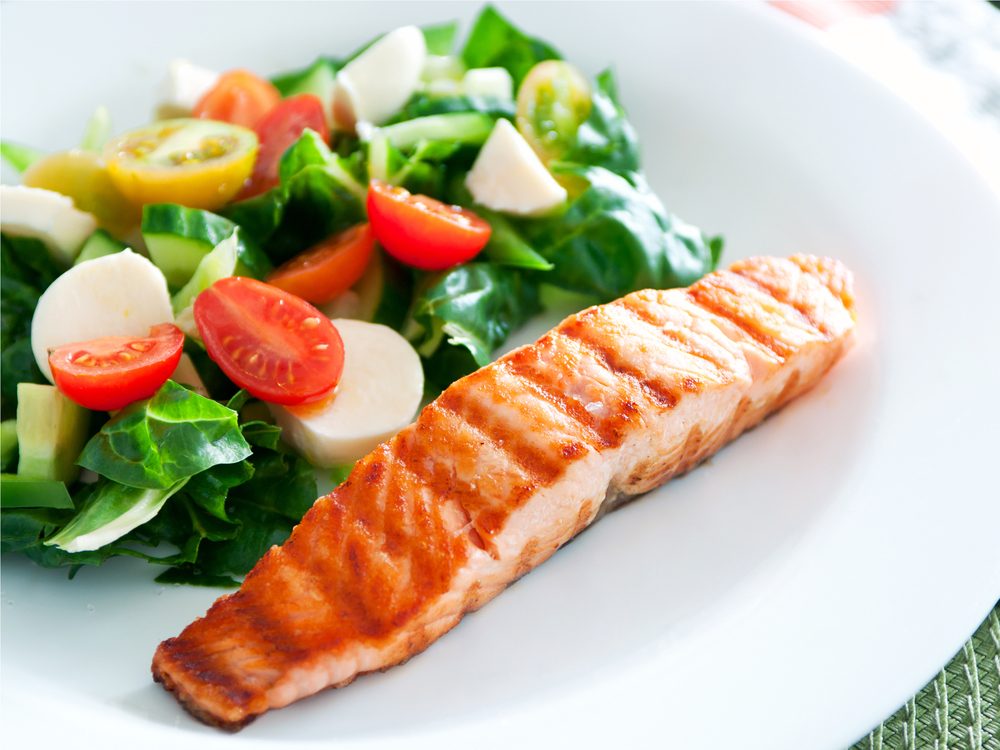
Lean on protein
Whether you choose grilled chicken or salmon, edamame or tofu, or nuts or seeds, you’ll release fat and feel more full. Stick to a healthy serving size to keep calories in check (a few ounces of meat, or a quarter cup of beans).
Don’t miss the best sources of protein, according to the new Canada’s Food Guide.
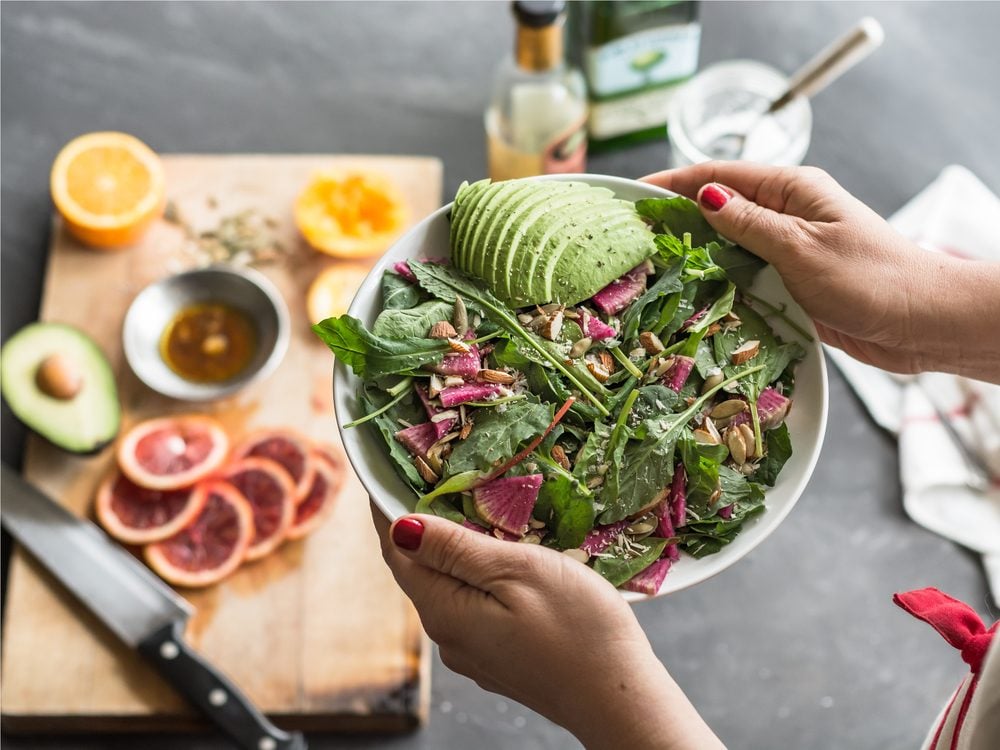
Throw in plenty of other veggies and fruits
Research shows that many vitamins and minerals have unique synergistic effects—meaning that they’re even more powerful when eaten together. So pack your salad with as many other veggies or fruits as possible! Carrots, cucumbers, different coloured peppers, broccoli, peas, artichokes, strawberries, raspberries, or pears are great choices to get in different textures as well as plenty of filling fibre.
Try these tricks to keep fruits and vegetables fresh longer.
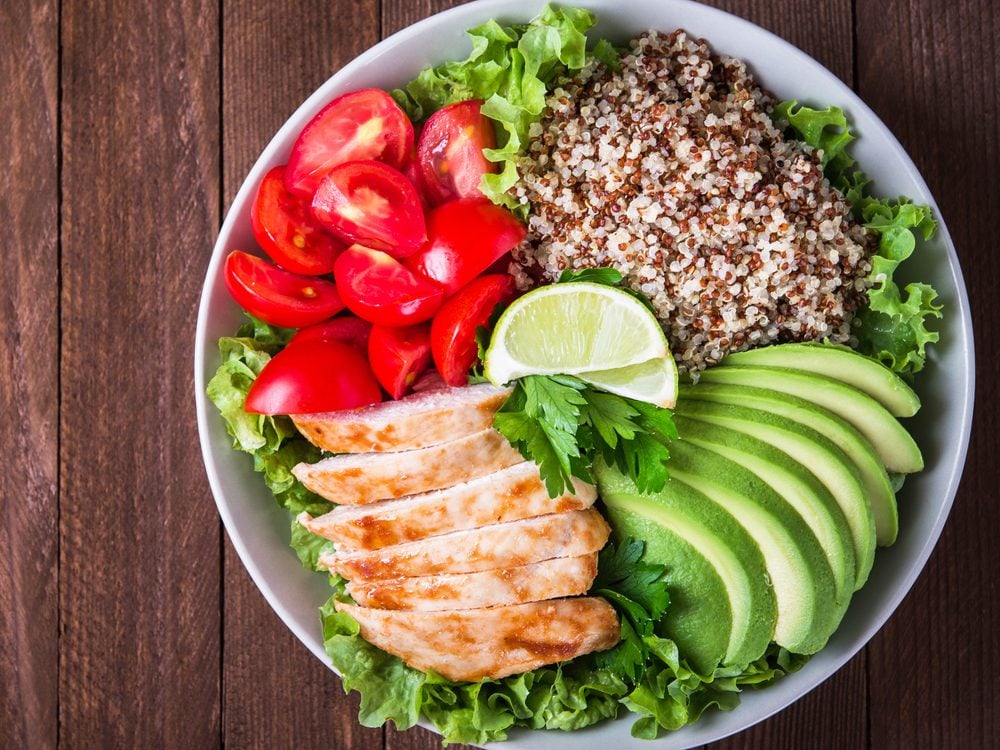
Skip the croutons
White-bread croutons have few nutrients and a high glycemic load, which means they cause a sharp spike in blood sugar. Instead, satisfy your craving for crunch with nuts or seeds and different veggies. Still want carbs? I like to add brown rice or protein-packed quinoa, a healthy choice which research shows decreases body fat and overall food consumption.
Next, check out this collection of healthy breakfast recipes to start each day right.